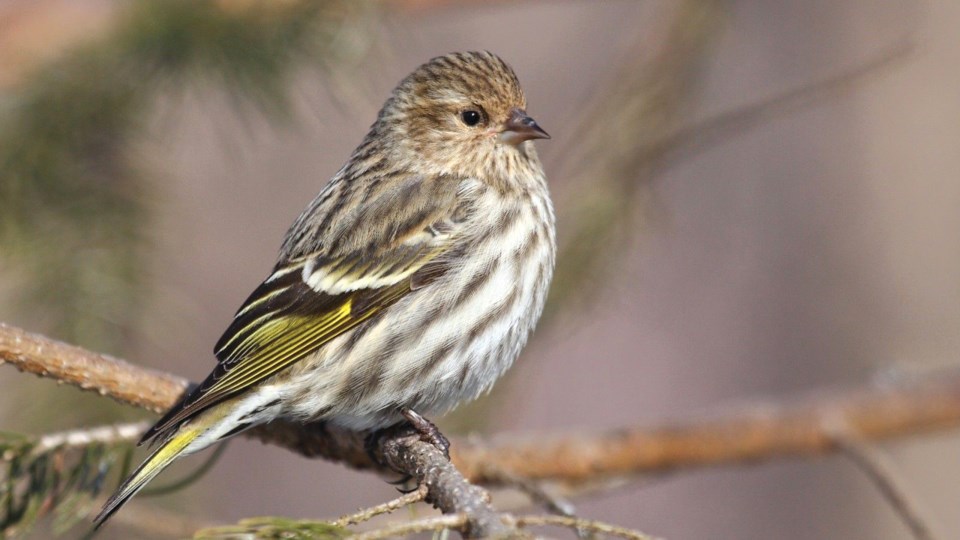During November, anyone with an interest in birds who has kept their eyes open and their ears alert will have been aware of the invasion of the Sunshine Coast by pine siskins. This small brown finch is usually fairly common in our area throughout the year but generally flies under the radar for most people as the flocks feed in the treetops. Having said that, the flocks are attracted to bird feeders that have nyjer seed on offer. Many people have been aware of the birds but not always able to put a name on them, as witnessed by the number of enquiries I have fielded.
Siskins form a section of the very large worldwide finch family with about 20 species spanning the globe from the Arctic to the Cape of Good Hope and Cape Horn. The only North American representative is the pine siskin. Finches in general exhibit irruptive behaviour, that is, they move around on a continental scale, responding to both food shortages and food abundance. Irruptive behaviour is similar to regular migration but rather than a strictly north-south movement it may be east-west , haphazard, or irregular, perhaps only once every few years. The usual explanation for an irruption is a failure of the cone crop in northern forests, which can be weather related but many conifers are on a cyclic pattern anyway.
At the present time there is a biblical irruption of pine siskins on the Sunshine Coast. The largest flock reported was about 2,500 birds but they are present in flocks large and small everywhere. The total number of birds is certainly in the tens of thousands, possibly the hundreds of thousands. The best numbers we have for the abundance of pine siskins on the Sunshine Coast (and all other wintering species) is the annual Christmas Bird Count (CBC) which has been conducted for the last 41 years, 1979-2019. The 41-year data base clearly shows the boom/bust, see-saw fluctuations of local siskin numbers. In most years the CBC usually records numbers in the hundreds. 1993 was the peak year with nearly 4,700 reported. In five out of 41 years the number has been less than 100 and in 2013 for the first time ever the number was zero.
The irruption is not confined to the Sunshine Coast as online sources in the U.S. indicate that the irruption there is “coast to coast, in astounding numbers” and potentially “the biggest in recorded history.” The cause of the irruption in the east is thought to be “a meagre supply of conifer seeds across boreal Canada.” Locally, I believe the irruption may be responding to a bumper crop of cedar seeds; in my garden a huge flock of siskins has been attracted to a giant cedar tree.
The siskin irruption is the second unprecedented irruption of the year as red-breasted nuthatches have also been present all year in never-before-seen abundance. To report your sightings or questions contact [email protected] or 604-885-5539. Good Birding.



